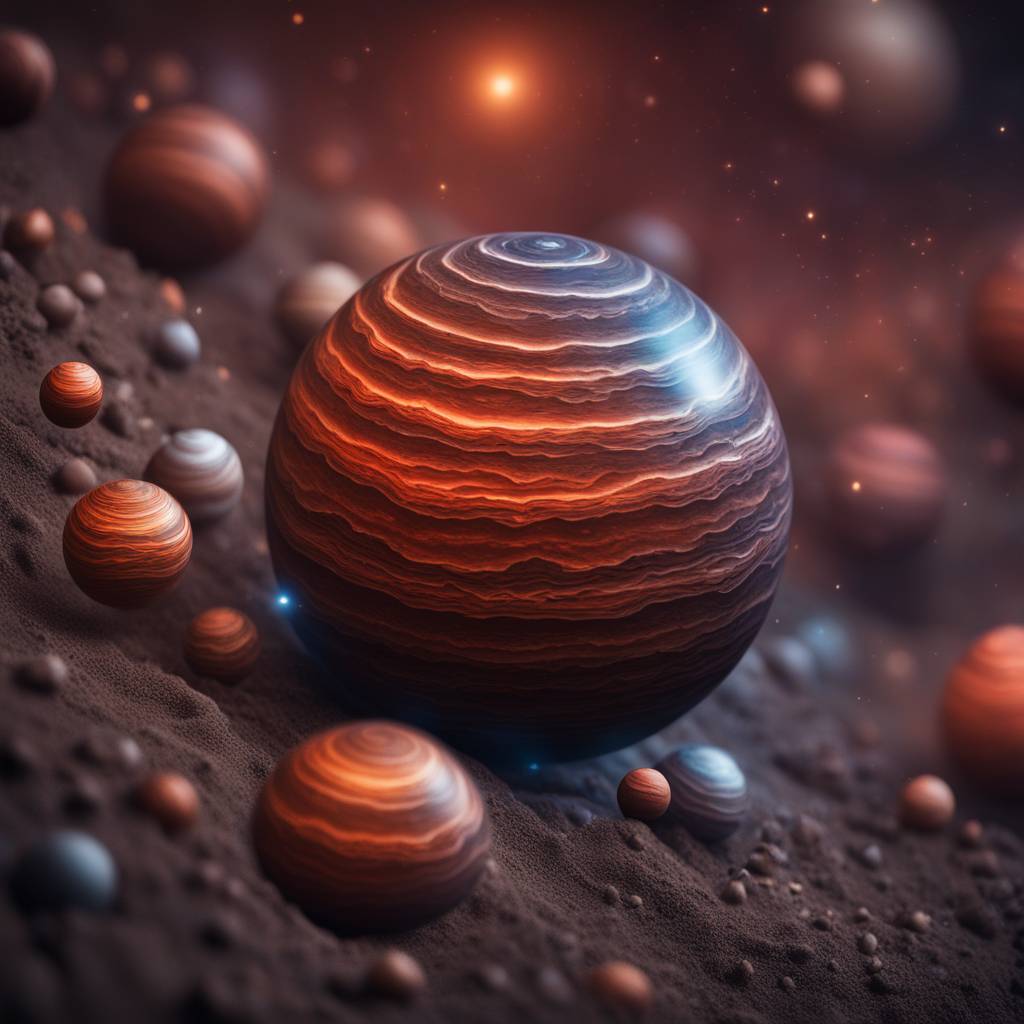New observations have provided insights into whether the birth of giant planets follows a similar course to that of stars. The early phase of star formation is characterized by chaotic and dynamic processes, with complex gas structures known as feeding filaments playing a crucial role. These filaments act as cosmic umbilical cords, feeding gaseous material from the surroundings to the newly formed star. Brown dwarfs, which are celestial objects with masses less than one-tenth that of the Sun, are too small to undergo nuclear fusion and shine like stars. Scientists were unsure whether brown dwarfs form like sun-like stars, but recent observations of the young brown dwarf, Ser-emb 16, revealed large-scale spiral and streamer structures connected to the brown dwarf. These structures cover a vast area and suggest asymmetric mass accretion via feeding filaments, indicating a dynamic formation process similar to that of stars.
The spiral structures and streamers observed around the young brown dwarf provide important clues about how brown dwarfs form. Simulated scenarios suggest that collisions of collapsing clumps within a star-forming region may trigger the collapse of small clumps to form brown dwarfs. These collisions are believed to generate spirals and streamers of various sizes and morphologies, indicating a dynamic formation process akin to that of Sun-like stars. Alternatively, simulations also suggest that the observed structures could correspond to a large disk around a very young brown dwarf, twisted by the rotation of the brown dwarf core in the presence of a strong magnetic field. This model implies the magnetic field plays a significant role in the brown dwarf formation process.
The high-sensitivity and high-angular resolution observations conducted by an international team of researchers, led by Dr. Basmah Riaz from the University Observatory Munich, have shed light on the early formation stages of brown dwarfs. Comparing the observations with numerical simulations, the researchers found that a gravitational infall scenario could explain the asymmetric mass accretion seen in the form of spirals and streamers around forming brown dwarfs. Ser-emb 16 is a unique case of a brown dwarf caught in the process of forming in a star-like fashion, highlighting the similarities between the formation of brown dwarfs and stars. These new findings provide valuable insights into the formation processes of celestial objects and the role of external environments in shaping their evolution.
The research team’s observations of the young brown dwarf Ser-emb 16 have revealed spectacular large-scale spiral and streamer structures never seen before towards a newly born brown dwarf. These structures, spanning a vast area connected to the brown dwarf, suggest the influence of the external environment in inducing asymmetric mass accretion via feeding filaments. Clumps of matter observed around the brown dwarf could potentially evolve into young brown dwarfs themselves, further supporting the dynamic and chaotic nature of brown dwarf formation processes. The comparison of observations with numerical simulations supports dynamic formation scenarios involving collisions of collapsing clumps or the influence of magnetic fields, offering new insights into the complex processes involved in the birth of brown dwarfs and potentially giant planets.













